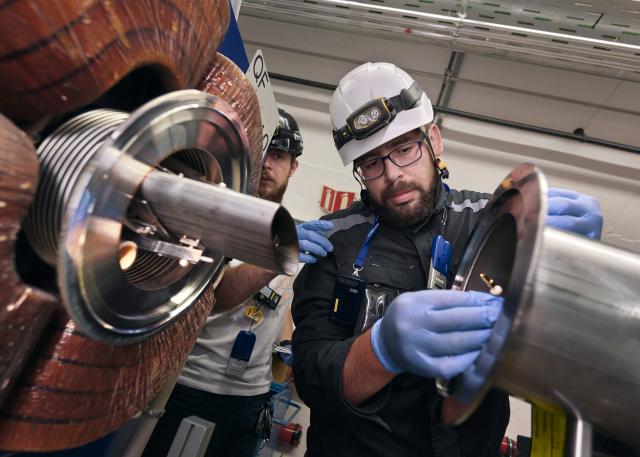CERN's Know-How
- More than 50 years of excellence in the control of large, distributed, high (HV), ultra-high (UHV) and extremely high (XHV) vacuum systems
- World-class training for the next generation of experts in vacuum technology (around 50 early career trainees per year at technician, PhD and Post Doc level)
- Significant know-how in surface characterisation, treatments and coatings (including electroplating and thin films)
- Development and operation of software for the simulation of gas flow dynamics and pressure profiles
Facts & Figures
- 127,000 m: Combined length of vacuum vessels in the CERN accelerator complex
- 15,000 m³: Volume of LHC insulating vacuum system
- 250,000 of welded joints in the LHC
- Down to 10-12 mbar: Pressure in LHC beam pipes as on the dark side of the moon
Value Proposition
Read more about High and Ultra High Vacuum Systems here.
Key Competences
Operation of large HV, UHV and XHV systems
The LHC is a very large and complex system of interconnected vacuum vessels - under high (HV) to extremely high vacuum (XHV). In order to secure reliable and high-performance operation, CERN experts have developed significant expertise in vacuum systems.
Specifications
- Mechanical and vacuum engineering, including thin-walled equipment such as windows and bellow
- Sealing and leak-tightness technology
- Simulation of gas transport in HV, UHV and XHV systems
- Distributed control systems, interlocks and monitoring tools
- Coatings, electroplating and surface cleaning techniques
- Characterization of materials and surfaces for vacuum
- Applications, including outgassing and permeation measurements
- High temperature treatments under vacuum
- XHV production and measurements
Key Applications
Functional thin-film coatings for UHV performance
Getters are widely used in industry to create and maintain vacuum. CERN’s NEG method uses cathode sputtering - a vacuum deposition process - to create a thin layer of NEG coating over a wide surface area of the chamber: significantly improving the pumping effectiveness and helping to maintain UHV.
Sealing & leak tightness technology
Tools and techniques for the sealing, detection and measurement of leaks in Ultra High Vacuum (UHV) systems. CERN’s technologies and know-how are particularly useful for pipes or joints that vary in diameter and are located in restricted places.

